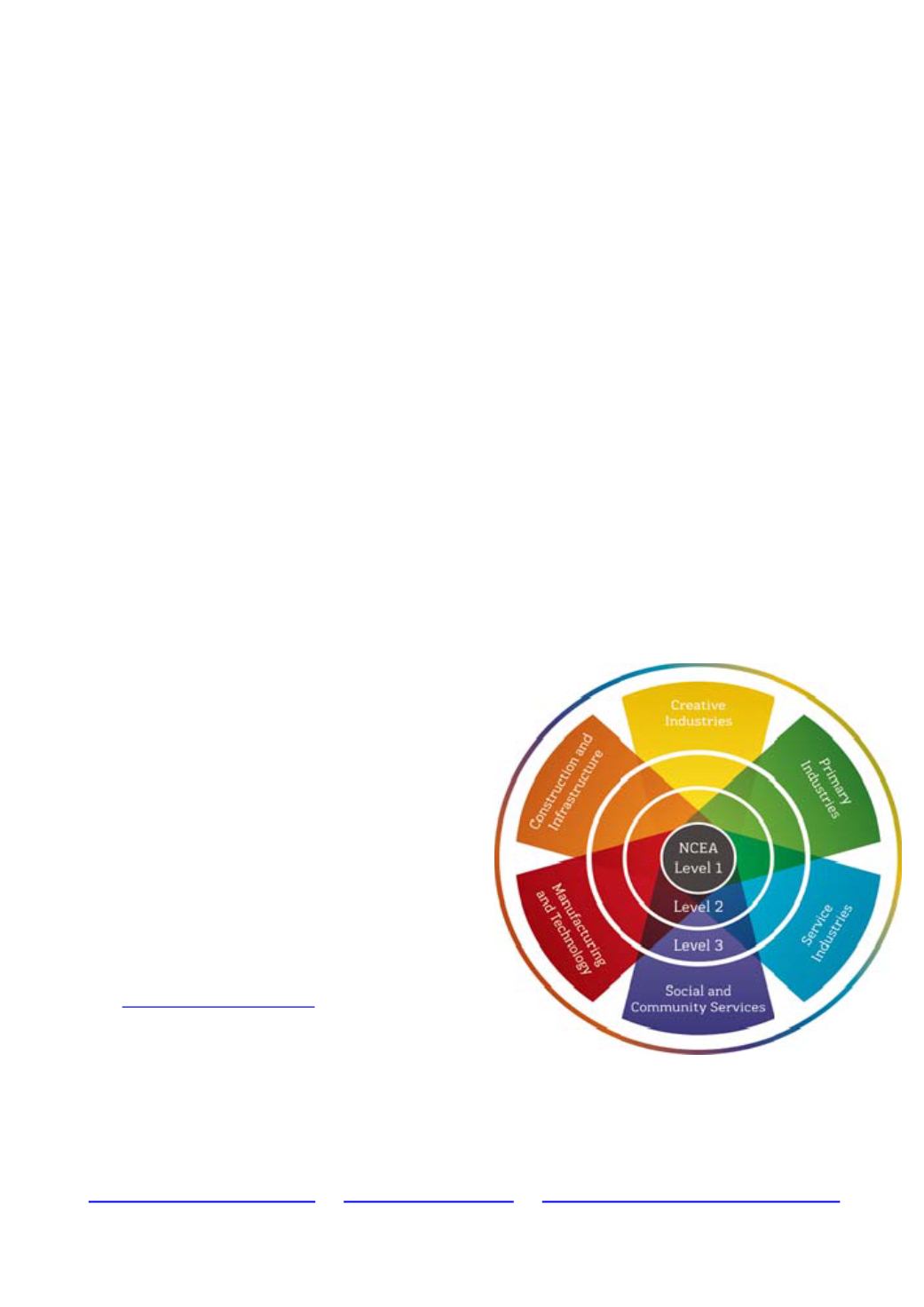
14
VOCATIONAL PATHWAYS
Building strong foundations, clear pathways, successful transitions
Vocational pathways provide new ways to structure and achieve NCEA level 2, the foundation for success in
further education and work. They enable students to see how their learning is relevant for a wide range of
jobs and study options in five broad sectors of industry:
Manufacturing and technology
Construction and infrastructure
Primary industries
Social and community services
Service industries
Creative
Vocational pathways give a new and clearer framework for vocational options and programmes. The
pathways help students thinking about their future options to see which subjects and standards they should
study to achieve their career goals. They are designed to improve relevance of learning for students, support
programme design and careers advice, and improve the links between education and employment.
The vocational pathways have been developed through a partnership between government agencies, the
industry training sector, secondary and tertiary educators, and industry and employer representatives.
Achieving credits towards vocational pathways means students are developing foundation skills and
knowledge in areas that employers value. Students can work towards the vocational pathway(s) by gaining
credits from the achievement standards and unit standards recommended by the sectors. The vocational
pathways will also make it easier for prospective employers and others to see when students have the
strengths, abilities and qualities they are looking for.
Tools available to implement the vocational
pathways:
The
vocational pathways documents:
can be used by
educators to plan the curriculum and learning
programmes using the vocational pathways; and by
students to plan their future work and study options.
The
recommended assessment standards:
are the
standards recommended by the six industry sectors. The
recommended assessment standards can be used to plan
and develop curriculum and programmes of learning.
Many standards are recommended across multiple
sectors so it is easy for students to transition their study
across pathways, according to their interests,
achievement and future ambitions.
The
profile builder:
is the new online tool to create a
vocational profile. Students and educators can enter the
standards achieved (or plan to achieve) using the
assessment standards, to build an individual profile. The
profile is a graphic representation of learning achievement
(and future study options) which students, parents,
whanau and employers can easily understand. It shows a
student’s learning and achievement, or planned
achievement, links to future study options and careers.
Visit
to build a profile.
Job profiles:
there are a huge number of roles and
occupations available in each industry sector, ranging
from entry level through to high levels. The pathways
show that for the majority of study and employment
options, NCEA level 2 is the minimum required to ensure
students achieve the necessary foundation skills and
competencies valued by employers.
Useful websites are:
,


